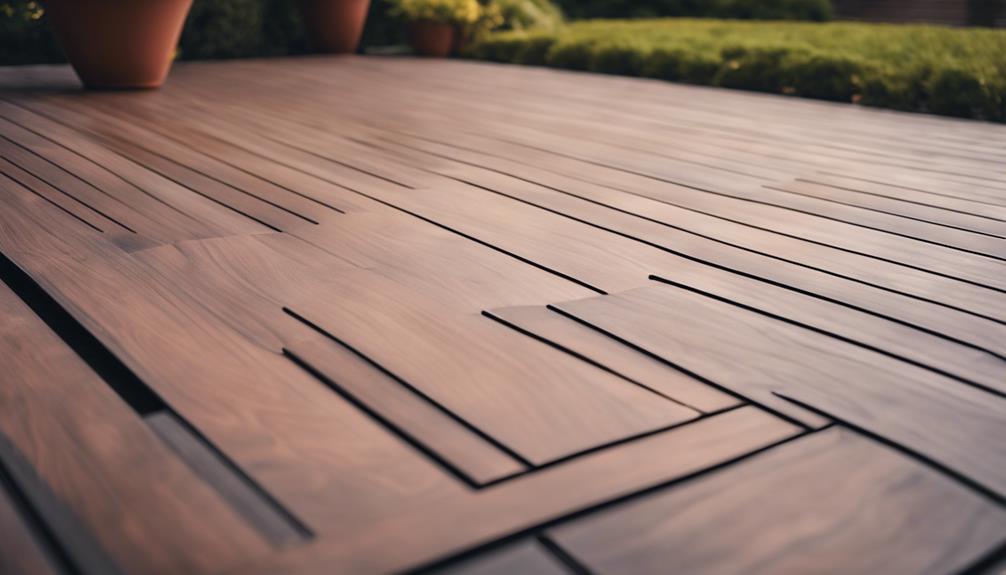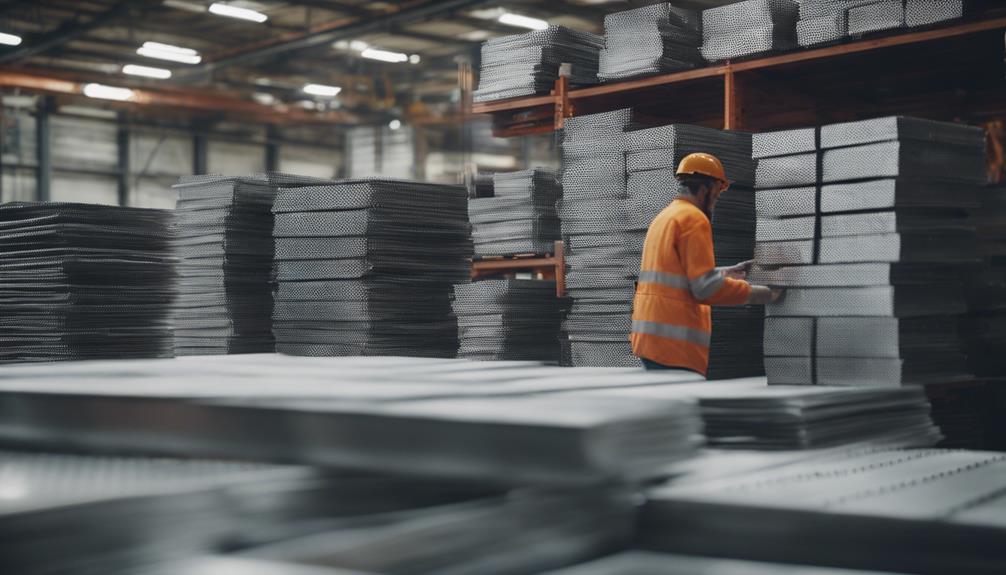Decking sheets play an essential role in enhancing structural integrity and longevity, especially in industrial and steel structures. These sheets act as a composite floor system, saving on concrete and reinforcement steel costs while offering stability for various designs. Materials like Galvalume, EVA Foam, and Faux Teak cater to different construction needs. The installation process requires proper alignment and secure fastening, ensuring a stable platform for the composite floor system. Regular maintenance, cost analysis, and weather-resistant properties further highlight the advantages of utilizing decking sheets in construction projects. Imbued with durability and advantageous properties, decking sheets are indispensable for cost-effective and reliable structures. consider the benefits these sheets can bring to industrial and commercial projects.
Key Takeaways
- Enhances structural integrity and longevity of buildings.
- Acts as a composite floor system, saving on concrete costs.
- Various materials like Galvalume and EVA Foam cater to different needs.
- Installation requires proper alignment and secure fastening.
- Regular maintenance ensures optimal functionality and durability.
Benefits of Using Decking Sheets
Using decking sheets in construction projects offers a multitude of advantages that greatly enhance structural integrity and longevity. Steel decking, such as the ones manufactured by Kansal Colour Products, is essential for industrial buildings and steel structures due to its strength and durability. These decking sheets act as a composite floor system, providing immediate access to working platforms and saving on concrete and reinforcement steel costs. Cool deck designs benefit from the stability and reliability that steel decking offers. In particular, galvalume roofing sheets are popular for their ability to guarantee against harsh weather conditions while requiring minimal maintenance. Incorporating steel decking into projects assures a robust flooring solution that can withstand various environmental challenges.
Types of Decking Sheet Materials
Decking sheets are commonly crafted from a variety of materials, with Galvalume standing out for its renowned durability and strength in construction applications. In addition to Galvalume, other materials like EVA Foam and Faux Teak are also used in decking sheet production. While Galvalume is favored for its robustness, EVA Foam decking sheets are known for their lightweight nature and shock-absorbing properties, making them ideal for marine applications. On the other hand, Faux Teak decking sheets offer a stylish alternative to traditional materials, mimicking the look of real teak wood without the maintenance requirements. Each material brings its own set of advantages, catering to different needs in the construction and design industry.
Installation Process for Decking Sheets
When considering the installation process for decking sheets, it is vital to guarantee proper alignment and secure fastening to uphold structural integrity and prevent potential water leakage. Decking sheets are typically attached using self-tapping screws or welds to ensure a firm attachment to the supporting structure. These sheets serve as a stable platform for the composite floor system, facilitating the placement of concrete or other materials. Following the manufacturer's guidelines for alignment and fastening is vital to maintain stability and durability. Proper installation practices not only prevent water leakage but also enhance the overall performance and longevity of decking sheets in various construction applications. Attention to detail during installation, such as utilizing EVA Foam for sound insulation, is key to optimizing the functionality of decking sheets.
Maintenance Tips for Decking Sheets
To maintain the integrity and appearance of decking sheets, it is essential to adhere to a regular maintenance routine. When dealing with Boat Decking Sheets made of EVA Foam, regularly clean them with a gentle cleanser and water to prevent dirt buildup and maintain their appearance. Additionally, inspect and replace any damaged or loose fasteners to guarantee the structural integrity of the sheets. Apply a protective sealant or coating to enhance their longevity and shield them from the elements. It is vital to avoid using harsh chemicals or abrasive cleaners that may harm the surface finish. Finally, trim any overhanging vegetation near the decking sheets to prevent moisture accumulation and potential damage.
Cost Analysis of Decking Sheets
An in-depth assessment of the financial aspects linked with utilizing decking sheets as roofing solutions reveals their cost-effectiveness and advantageous structural properties for industrial and commercial buildings. Decking sheets, often made with materials like EVA and foam, offer a compelling cost analysis due to their affordability compared to traditional roofing materials. The structural strength and durability they provide result in long-term savings by reducing maintenance and replacement expenses. Additionally, the quick and easy installation process of decking sheets helps lower labor costs and project timelines, making them a financially viable option for construction projects. Their weather-resistant properties further contribute to cost savings by minimizing damage and the need for frequent repairs, making decking sheets a practical and cost-effective roofing solution for various building types.
Frequently Asked Questions
What Is Decking Sheet?
A decking sheet is a profiled steel sheet used in construction to provide structural support and stability for roofing, floors, and other building components. It enhances load-bearing capacity, structural strength, and durability in diverse construction applications.
How Thick Is Deck Slab Sheet?
Deck slab sheet thickness typically ranges from 0.8mm to 1.2mm, offering structural stability and increased load-bearing capacity for construction projects. The selection of the appropriate deck slab sheet thickness is essential for ensuring durability, safety, and longevity of the building structure.
What Size Is a Sheet of Decking?
The size of a sheet of decking varies based on project specifications and manufacturer guidelines. Understanding the standard sizes available, typically measuring 4 feet by 8 feet, aids in accurate material planning. Custom orders cater to unique design needs.
What Is the Strength of Decking Sheets?
The strength of decking sheets lies in their ability to provide structural support and durability to various constructions. These sheets are engineered to withstand heavy loads, offer stability, and enhance the overall structural integrity of buildings.










